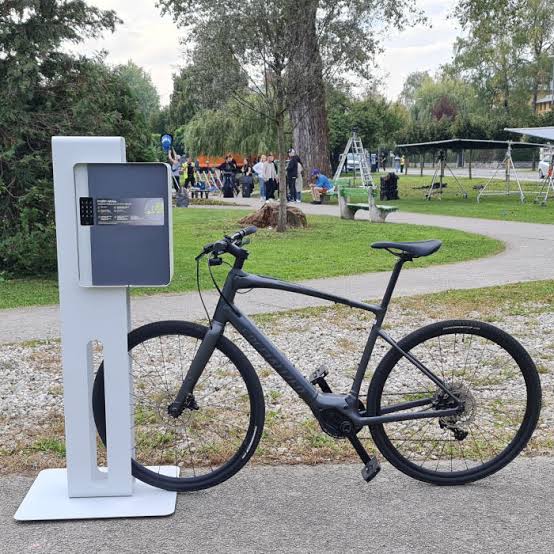How to Set Up and Operate a Thin Film Deposition System
Thin film deposition systems are crucial in research and industrial sectors, enabling the precise application of thin film materials onto substrates. These systems are fundamental in developing electronics, optical devices, and various coatings, enhancing product life and performance.
In this blog, we’ll go over everything you need to know to set up and run a thin film deposition system. Whether you’re a novice researcher or an experienced engineer, this guide aims to equip you with the necessary knowledge to effectively utilise these systems for your specific applications. Let’s dive in!
What is Thin Film Deposition?
Thin film deposition is a critical process in manufacturing and technology sectors, involving the application of a thin layer of material, ranging from a few nanometers to about 100 micrometres thick, onto a substrate or previously deposited layers.
This process is essential for creating the various material layers in semiconductors, solar cells, and optical components, among other applications.
The thin film deposition process involves:
Physical Vapour Deposition (PVD): Material transfer via physical techniques, such as sputtering or thermal evaporation, is employed in electronics and optics to create thin films.
Chemical Vapour Deposition (CVD): It utilises chemical reactions for thin film deposition, with methods such as Atmospheric Pressure CVD or Plasma-Enhanced CVD, offering precise control over film characteristics.
The choice between PVD and CVD depends on material properties and desired outcomes. PVD excels in physical layering and high-purity coatings, while CVD is favoured for chemical coatings and covering complex shapes.
Choosing the Right Thin Film Deposition System
When selecting the right thin film deposition system, it’s crucial to understand your project’s specific needs and how they align with the capabilities of different deposition technologies. Start by considering the following:
- Deposition Method: Identify the deposition method that will best create the desired film structures for your application. This decision impacts the system’s design and functionality.
- Customisation Needs: Determine whether a standard system meets your needs or if a custom solution is necessary. Custom systems can offer tailored features but may require a higher investment.
- Integration: Assess how the new system fits your workflow and space. Ensure the system can be integrated safely and efficiently into your current environment.
The HEX Series: An Overview
The HEX Series from Korvus Technology stands out for its modularity and versatility, catering to academic and industrial settings. This series is adaptable to many different uses since it can handle different types of deposition.
The systems are designed for ease of use and can be customised to suit research and production requirements. When considering the HEX Series, evaluate how its features align with your project’s specifics, such as the type of thin films you intend to produce and the substrate materials you plan to use.
How to Decide Between Evaporation and Sputtering for Thin Film Deposition
Consider your material’s properties and the film’s intended application when choosing between evaporation and sputtering methods. Evaporation might be more cost-effective and simpler for high deposition rates and applications requiring less precision in film uniformity.
On the other hand, sputtering could provide better film quality and uniformity. However, it may come at a higher cost and complexity. These methods should align with your project’s budget, quality requirements, and production scale.
Setting Up Your Thin Film Deposition System
Pre-installation Requirements
Before installing your thin film deposition system, ensure the following:
- Space and Infrastructure: Confirm that your facility has the necessary space and infrastructure to accommodate the system, including electrical, cooling, and vacuum connections.
- Safety Measures: Ensure all safety protocols are in place, including ventilation and hazard communication plans.
- Component Inspection: Verify all components are delivered without damage and are correctly labelled.
Step-by-Step Guide to Assembly and Installation
- Unpack and Organise: Carefully unpack all system components and organise them based on the installation sequence.
- Frame Assembly: Construct the system frame according to the manufacturer’s instructions, ensuring all parts are secure.
- Component Installation: Install each component in the prescribed order, typically starting with the vacuum chamber, followed by the deposition sources and monitoring equipment.
- Wiring and Connections: Connect electrical, cooling, and vacuum systems, double-checking all connections for safety and functionality.
- System Calibration: Follow the calibration procedures provided by the manufacturer to ensure accurate operation.
Setting Up Your Thin Film Deposition System
Pre-installation Requirements
Before installing your thin film deposition system, ensure the following:
- Space and Infrastructure: Confirm that your facility has the necessary space and infrastructure to accommodate the system, including electrical, cooling, and vacuum connections.
- Safety Measures: Ensure all safety protocols are in place, including ventilation and hazard communication plans.
- Component Inspection: Verify all components are delivered without damage and are correctly labelled.
Step-by-Step Guide to Assembly and Installation
- Unpack and Organise: Carefully unpack all system components and organise them based on the installation sequence.
- Frame Assembly: Construct the system frame according to the manufacturer’s instructions, ensuring all parts are secure.
- Component Installation: Install each component in the prescribed order, typically starting with the vacuum chamber, followed by the deposition sources and monitoring equipment.
- Wiring and Connections: Connect electrical, cooling, and vacuum systems, double-checking all connections for safety and functionality.
- System Calibration: Follow the calibration procedures provided by the manufacturer to ensure accurate operation.
Operating the Thin Film Deposition System
Understand the fundamental principles of your system, including vacuum technology, material vaporisation, and film formation. Familiarise yourself with the control interface and emergency shutdown procedures.
- Loading Samples: Securely place your substrates within the deposition chamber using the appropriate fixtures.
- Setting Parameters: Enter the deposition parameters, such as base pressure, gas flow, power settings, and deposition rate, based on your material and desired film characteristics.
- Process Initiation: Start the deposition process, monitoring the system’s parameters and adjustments as needed.
- Post-Deposition: Safely remove your samples after the process, ensuring the system returns to a safe baseline state.
Regular Maintenance Tips
- Routine Checks: Regularly inspect vacuum seals, electrical connections, and source materials.
- Cleaning: Clean the chamber and components to avoid contamination and ensure consistent film quality.
- Record Keeping: Maintain logs of system use, maintenance activities, and any anomalies for troubleshooting.
Conclusion
Setting up and operating a thin film deposition system requires careful consideration of various factors, from choosing the right deposition method to ensuring proper installation and maintenance.
By following the step-by-step guide in this blog, you can effectively harness the capabilities of these systems for your research or industrial projects. Remember to prioritise safety, adhere to manufacturer guidelines, and stay vigilant in maintaining your system for optimal performance.
Stay in touch to get more updates & news on Discover Tribune!






